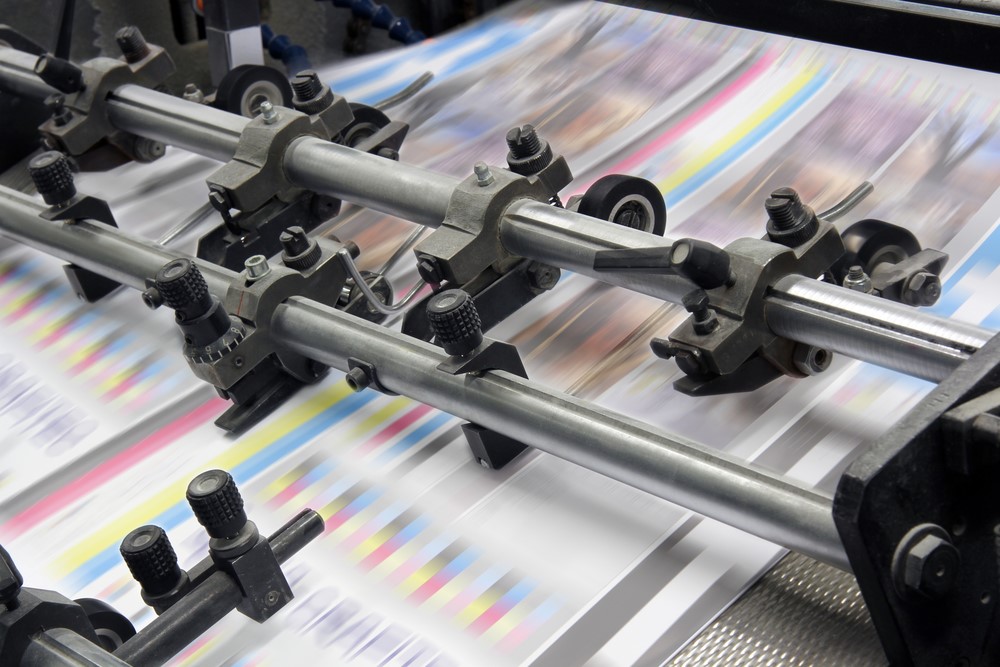
4 Steps to Consider for a Successful Print Job
- Published: Monday, 23 July 2018 12:29
When it comes to printing quality work that you can be proud of, it’s important to get the little details right. Colour, quality and cost are only a few of the considerations to make before selecting the right elements for your printing process.
With the advancements in modern printing, no job is too big or too small. But with so many different options available, it can sometimes be difficult to navigate the printing process.
To help you with your next printing project, we’ve developed a four-step guide to creating your perfect custom printing solution.
1. Choose Your Colours
One of the main considerations to make when creating your artwork is which colour mode it will be set to. The colour mode of your artwork will impact the type of printing process used and will change the way in which it produces its colour. Two of the primary methods for creating colour in printing are CMYK and Pantone.
CMYK
Also known as the ‘four colour process’, this method of colour printing combines various ratios of cyan, magenta, yellow and black (key or CMYK) inks. These colours are individually applied in a layered process to create an image and achieve the colour required. Any artwork that contains a photo image will need to be printed using this method.
Pantone
The Pantone Matching System (PMS), also known as ‘spot colour’ printing uses a set of predefined formulas for creating colour. Much like paint, printers mix these inks in a specific ratio to achieve the exact colour required. The Pantone system is the best method for achieving colour consistency across materials, making it ideal for your business branding.
2. Determine the Best Print Process
There are several things to consider, when choosing the best print process. Your printer will help you decide on what’s best, with Digital and Offset printing being the two main options.
Digital
Digital printing is a newer printing method which has improved over time to become an effective and economical option. Digital printing streamlines the printing process, making it better suited for smaller quantities of work, especially those that have multiple pages such as catalogues, notepads and annual reports. Digital printing can also allow for a variety of finishes and effects including clear gloss varnish, spot gloss UV and gold/silver metallic print.
Offset
Offset printing is a more traditional printing method best suited for larger quantities of work. While it can also print in CMYK, offset is the only printing method which can produce the colour consistency of the Pantone Matching System (PMS). This method is faster than digital printing in terms of sheets per minute and over large enough quantities becomes more cost-efficient.
3. Design Your Art Work
When first designing your art work for print, there are a number of factors to consider which could influence your design. Your choice of paper stock, printing process and finishing options should be considered and shared with your printer, so they can make sure your design will be an appropriate match for your requirements. The colour quality, size and volume of your printing job will all contribute to choosing a printing method that’s best for you. Preparing your artwork before printing is an important part of the design process. Some factors to consider when preparing your work include:
- Size of the artwork
- Amount of bleed required
- Type of font desired
- Page layout
- Colour mode
- File format
- Images and where these will be sourced (taking into account Copyright)
Need help with your artwork? Our in-house graphic design team can design your artwork from scratch, or we can help tweak your existing artwork, to make it ready for printing.
4. Add the Final Touch
Adding something special to your printing job can help grab attention and really make your design stand out. At G Force printing we provide a range of different options to take your printed material to another level.
Paper Type
The paper you decide to print on can have a surprising effect on your product. Thickness, colour and texture are all options to choose from which can change the look and feel of your work. Half or fully recycled paper is also available and can add its own style to your work.
There is a push for all industries to reduce their carbon footprint, and paper choice is a key way to do this. There are now a range of environmentally friendly recycled paper options. These come in various look and feels, from a rustic fully recycled look, right through to a smooth glossy white stock that is still partly recycled. Ask your printer about the recycled paper options available.
Print Finish
Whether you’re looking to make a bold statement, or just take the work out of preparing your documents, G Force have a range of different finishing options for your printed material, including:
- Folding
- Laminating
- Scoring
- Perforating
- Embossing
- Foiling
- Spot gloss
- Die cutting
These finishing options can add an extra dimension to your printed products. If you’re looking for a hand with your printed materials, contact the experts at G Force Printing. We offer Australia wide delivery with our fast and reliable network. Give our team a call today to see how we can help. We offer a wide range of printing services such as pull up banners, a-frame signs, flag banners, business cards, signage, offset printing, digital printing, take 5 booklets (view take 5 safety booklet examples) and more.